A vital new London exhibition entitled Museum of Transology relays individual gender journeys through the seemingly arbitrary ephemera associated with them
A pair of shoes, an earring, a sanitary pad, a penny. A list of seemingly arbitrary objects can take on a whole new meaning when you delve into the stories behind them, as the poignant and important new exhibition The Museum of Transology proves. The show traces trans men and women’s gender journeys, presenting ephemera with touching explanatory notes that demonstrate even the most seemingly insignificant object can become imbued with meaning. Everyday items are transformed into signifiers of a new life, where external expressions of identity finally match interior feelings.
The 120-odd pieces have been collected through crowdsourcing by trans curator and fashion historian E-J Scott, and began with the collection of items that he amassed after his own surgery – a hospital gown, a pillowcase, medicine cups. “It became clear to me that trans narratives and lives were missing from the museum and heritage sector. Those histories have been lost, so I wanted to start a collection and it grew really quickly,” says Scott.
What does he hope visitors will take away? “We want to humanise the trans experience. All these people deserve respect for the boldness and ambition they have,” he says. “The show also helps break down the idea that gender is a binary system, theres a fluidity in how we construct our identities. Each person picked something that’s deeply individual for them, and gender is also a deeply individual thing. It’s about destabilising what we associate to be gendered objects, when in fact they could be telling a different story.”
There’s poignancy in the apparent mundanity of the objects – Caitlin Jenner Oscars gowns these are not. The show draws back the curtain on the realities of trans identities and take them out of a media-led cisgendered gaze: this is trans lives told through the words of trans people. Scott talked us through some of the objects that’ll be on show at the exhibition which runs from January 20 until April 22 at London’s Fashion Space Gallery.
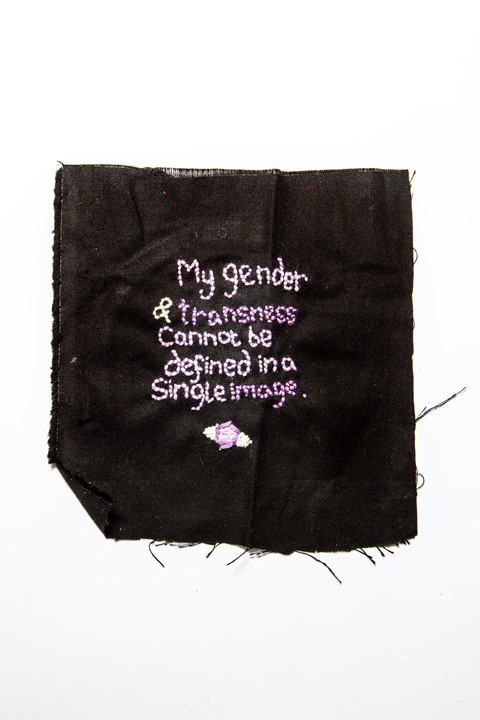
Embroidery: “My gender and transness cannot be defined in a single image”
“A young non-binary person hand-made this. Embroidery is typically seen as a traditional women’s craft, and it’s being used here to destabilise that. It has that sort of DIY aesthetic that’s very much associated with the trans community. Lots of people use art and making in the trans community as part of the healing process. That DIY look is also a practical thing – a lot of objects are repurposed or reused because of the financial difficulties people face. It’s hard to get employment if you don’t look cisgendered. I don’t think that’s changing yet, which is why we need shows like this, to say that not all trans women look like models and not all trans men look like gym buffs; but everyone needs to be treated with respect and dignity.”
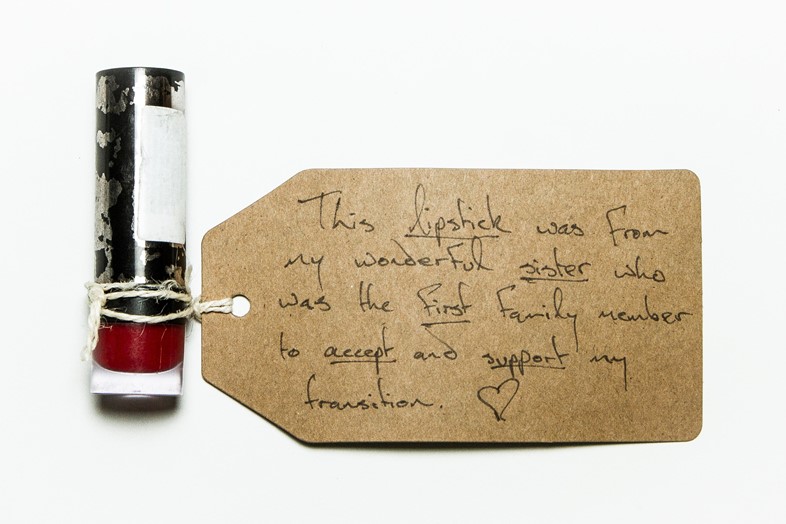
Lipstick: “This lipstick was from my wonderful sister who was the first family member to accept and support my transition”
“There’s still a long way to go before trans people have complete acceptance, so some may be isolated from their families or have lost partners or be refused access to their children. It can be hard after transitioning to find a place for yourself in the world, but many trans people live very happy lives and have healthy relationships with partners, parents and family. Young people should be allowed to find the space to define their own genders.”
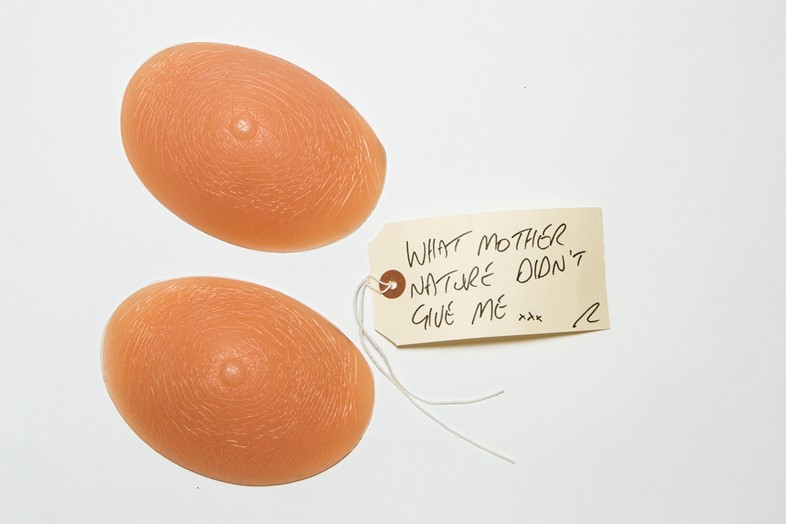
Prosthetic breasts: “What mother nature didn’t give me”
“These are from a woman who hadn’t started hormonal treatment at that stage. She has since, so she doesn’t need them now, but it’s definitely a response to the physical oppression she felt due to her biological situation. Objects like these empower people to shape their own silhouettes, that’s human nature, not just something in the trans community. There’s a beauty industry that applies to us all that we use to fashion our identities.”
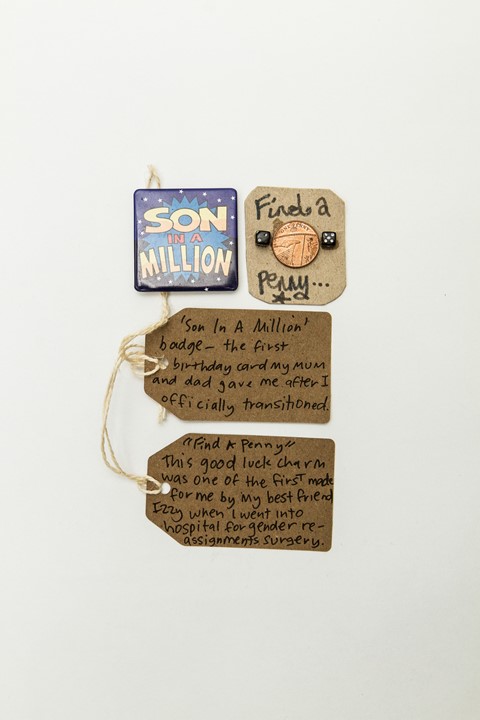
Son in a Million badge: “The first birthday card my mum and dad gave me after I officially transitioned” and Find a Penny “This good luck charm was one of the first made for me by my best friend Izzy when I went into hospital for gender reassignment surgery”
“This is from Ben Pritchard’s collection. He’s an actor and very out and empowered but still lives with family. He’s very close to them and they supported him all the way through his transition, so it shows how support can help on the gender journey path.”
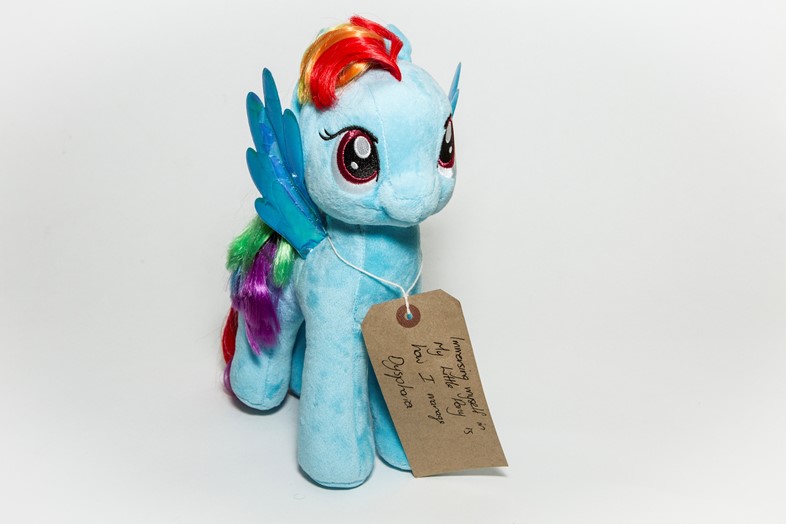
My Little Pony: “Immersing myself in My Little Pony is how I manage dysphoria”
“That’s one of the unpredictable objects in the collection. It’s obviously deeply personal and shows that we need to understand that there are times when it’s difficult to cope, whether that’s because of social oppression, violence or abuse. Finding our own coping mechanisms for dysphoria is something we’ve all had to do, and she admits that openly which is really lovely.”
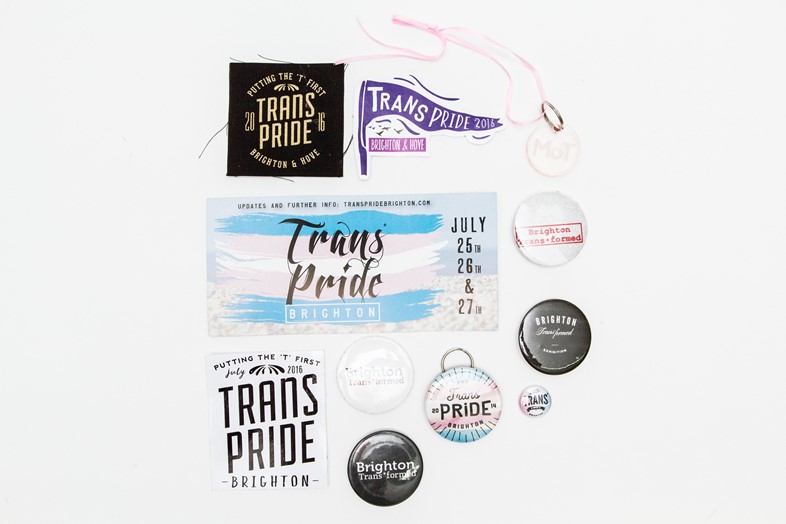
Trans Pride ephemera
“Events like this are absolutely crucial. They’re a place where people find their voices, come out, or find each other. They’re very, very important in holding the community together. They raise visibility and become a place of empowerment for trans people to become increasingly confident and visible. This is what will make change happen. These were made by the artist and filmmaker Fox Fisher, one of the organisers of Trans Pride.”
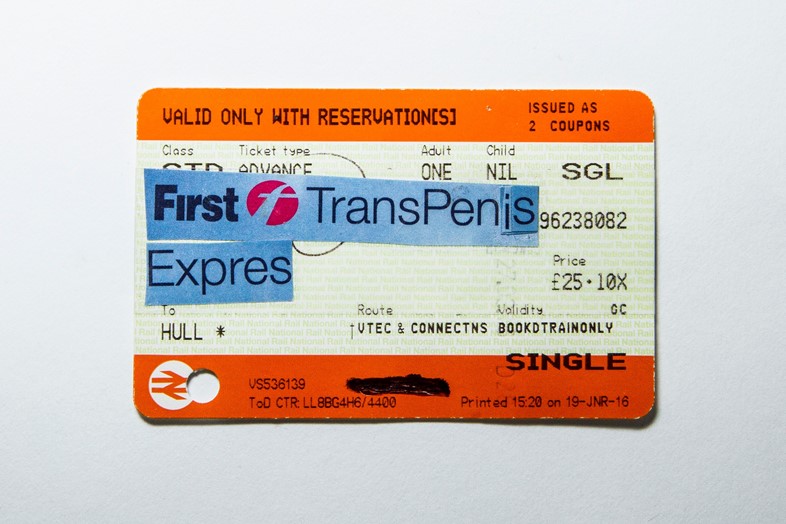
First Trans Penis train ticket collage
“This came from a trans performance group who put on plays, make films and have fun. It’s a comedic response to trans oppression. In their words, ‘Most comedy featuring trans characters seems to use us as cheap punchlines, so the films were a way of being funny on our terms, lifting low spirits, and highlighting the ridiculousness of transphobia.’”
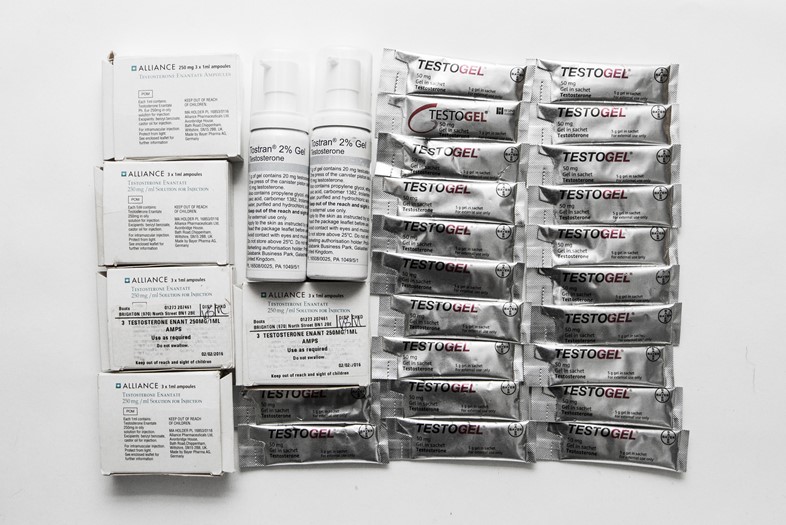
Testosterone packages
“There’s both testosterone and oestrogen packages on display together. Not everyone that uses them is binary, but there are narratives shared by some trans people and medical and hormonal treatment is essential for some. It brings up bigger issues: a recent parliamentary report that said the NHS was essentially failing trans people. The waiting lists are too long, there aren’t enough surgeons, and there’s the problem of people being pathologised to have to prove to cisgender people that you’re trans. When you see the gravity of these things, no one would make it up. The visibility of this cabinet is quite vital.”
Museum of Transology runs until April 22, 2017 at Fashion Space Gallery, London.






